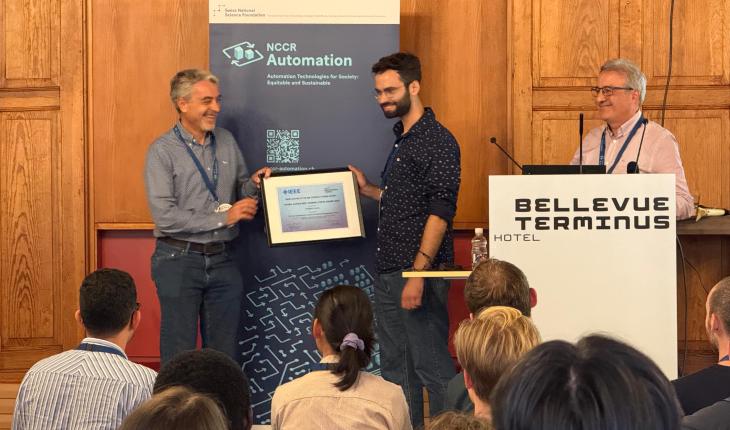Urban Driving Games

In a world where autonomous driving vehicles make up an ever larger share of road traffic, algorithms are becoming an increasingly important factor for road safety. Urban environments with their various means of public transport, busy streets and many pedestrians pose a particular challenge. Using so-called Urban Driving Games, researchers from the NCCR Automation led by Alessandro Zanardi from ETH Zurich have investigated how autonomous vehicles can become better drivers in a simplified version of this environment. Their results have been published in the journal IEEE Robotics and Automation Letters.
Current autonomous vehicles are too passive
“In recent years, many videos of autonomous vehicles performing very poorly went viral on social media. Like endlessly waiting and thus failing to merge onto the highway, for example”, Alessandro Zanardi, first author of the study and doctoral candidate at the ETH Zurich begins to explain. The likely reason behind this, according to the researcher, is that current motion planning algorithms for autonomous vehicles tend to yield “passive” behaviors on the roads. “For instance, a vehicle first predicts others’ actions and then plans accordingly around them”, Zanardi says. “It would be better, however, if the decision making procedure would directly consider how other vehicles react to our decisions.” To demonstrate this, the team considered everyday vehicle interactions from a game-theoretical standpoint. This means that the vehicles are self-interested in personal objectives, such as getting to a certain destination, and fulfilling traffic rules. Additionally, and most importantly, they also follow “communal” interests – such as not colliding with each other – that would be expected of any rational driver.

Institute for Dynamic Systems and Control at ETH Zurich.
Efficient “anarchy” with room for improvement
“For the first time, we were able to show that if the vehicles follow these simple rules, they turn out to become very efficient drivers from a community point of view. Just as if the drivers could to talk to each other and coordinate”, Zanardi says. While not entirely unexpected, based on what the researcher calls a “hunch”, the result is still quite remarkable. Previously, studies in the field of autonomous vehicles often found undesirable outcomes when drivers acted out of self-interest – no matter how rationally they acted.
The promising result should however be taken with a grain of salt. “To be able to implement this game-theoretical result in real-world practice, we need to account for one very important factor: uncertainty”, Zanardi says. How other drivers, especially human ones, react to actions of a driver cannot be perfectly predicted. Therefore, there needs to be room for error. Especially in a setting, where the smallest mistakes can cause severe accidents.



